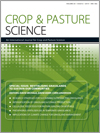
Crop and Pasture Science
Volume 65 Number 6 2014
Revitalising Grasslands to Sustain our Communities
CP13420Opportunities and challenges in Australian grasslands: pathways to achieve future sustainability and productivity imperatives
A diversity of livestock production systems are based on grasslands in Australia and these contribute 40% of Australia’s agricultural output and manage 50% of its land. To remain profitable these systems need to continue to increase their efficiency while also enhancing the environmental services grasslands provide. We discuss several innovations and practices being developed which could help grassland production systems achieve these goals in the future.
CP13429Frontiers and perspectives on research strategies in grassland technology
The paper reviews recent developments in technologies that are essential for grassland farm management. It highlights the linking of precision agriculture with soil ecology, biotechnology and functional plant ecology as well as with remote sensing and simulation models. The authors conclude that understanding and managing the complex system of a grassland farm under increasing economic pressure, global change and administrative regulations requires more intense and qualified decision support than ever. There is scope for new technologies to provide such decision support, if education is equally offered to young farmers.
CP14001Intensification of grassland and forage use: driving forces and constraints
Grasslands are diverse and biodiversity-rich ecosystems, covering 40% of the global land area. The intensification of its use for beef, dairy, sheep and goat production is economically attractive but may have serious environmental and social side-effects. Understanding the driving forces, mechanisms and region-specific constraints of intensification is important for developing sustainable grassland systems
CP14001 Abstract | CP14001 Full Text | CP14001PDF (928 KB) Open Access Article
CP13362Can arable forage production be intensified sustainably? A case study from northern Germany
A major part of the greenhouse gas emissions arising from dairy production originates from the cultivation, transport and storage of forage crops. This study investigated whether the production of arable forage crops can be intensified by N fertilisation while mitigating GHG emissions per unit forage produced, the so-called product carbon footprint. Evidence was obtained of potential for sustainable intensification when crop management is adjusted to increase the resource-use efficiency of forage cropping systems.
CP13396The value of native, warm-season perennial grasses grown for pasture or biofuel in the southern Great Plains, USA
Switchgrass has the potential to produce large quantities of bioenergy feedstock in the rain-fed growing conditions of the southern Great Plains, and is suitable for large-scale conversion into biofuels like ethanol. Widespread establishment of switchgrass pastures in the region requires that it coexist economically with an existing agricultural production system. Results showed that switchgrass pastures economically extended the grazing life of beef steers in the small grain forage grazing system common to the region while also providing for ample quantities of bioenergy feedstock necessary to supply a regionally located biorefinery.
CP13396 Abstract | CP13396 Full Text | CP13396PDF (354 KB) Open Access Article
CP13395Pasture plants and soil fertility management to improve the efficiency of phosphorus fertiliser use in temperate grassland systems
Phosphorus (P) is a non-renewable resource important for productivity in many grassland systems. The P balance of fertilised, temperate pastures is reviewed to identify the causes of inefficient use of P fertilisers. Immediate efficiency gains can be made by ensuring that pastures are not over-fertilised. Use of plants with low critical P requirements, combined with management responses and fertiliser innovation, will be important for further increases in P-use efficiency.
CP13392Implications of risk attitude and climate change for optimal grassland management: a case study for Switzerland
Climate change is expected to affect grassland production in various ways, with consequences for future food supply and land use. We develop a bio-economic model to examine the implications of risk aversion for optimal N use in grassland production under current and future climatic conditions. We find climate change impacts and adaptation to be sensitive to the preferences of farmers, which should be considered if giving recommendations on adaptation strategies.



